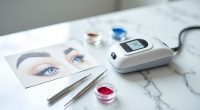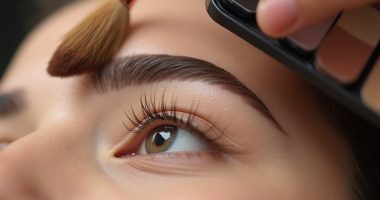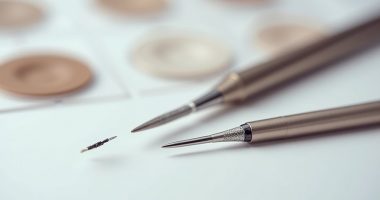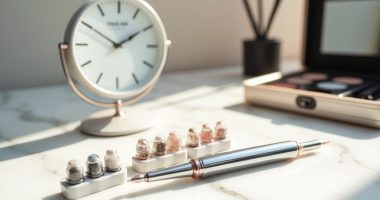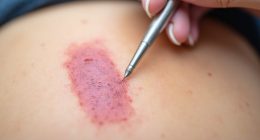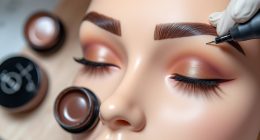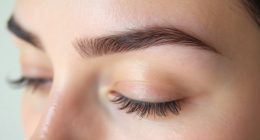Permanent makeup costs vary widely. Eyebrow microblading runs $300-$800, while lip tinting commands $400-$1,200. Eyeliner tattooing? That's $250-$1,000. Factors like artist experience, location, and salon reputation drive prices up or down. Don't forget hidden costs—consultations, touch-ups, and aftercare products add up fast. Cheap work often looks, well… cheap. The premium for quality artists? Worth every penny for results that last 1-3 years. The full pricing picture gets even more interesting.

Why do so many beauty enthusiasts hesitate before taking the plunge into permanent makeup? The answer isn't rocket science—it's the cost. Permanent makeup isn't cheap. But understanding what you're paying for helps make sense of those price tags.
Let's talk numbers. Eyebrow microblading runs between $300 and $800. Want those lips tinted? That'll be $400 to $1,200. Eyeliner tattooing costs anywhere from $250 to $1,000. The prices swing wildly. They just do. A small-town artist charges less than someone in a big city with a waiting list. Simple math.
Artist experience greatly impacts pricing strategies. Newbies charge less. Veterans charge more. Makes sense. You're not just paying for ink—you're paying for years of training and thousands of successful procedures. Permanent makeup procedures typically last 1 to 3 years before requiring touch-ups, making the initial investment more reasonable when spread over time. Some artists use tiered pricing strategies based on their seniority. Others offer package deals if you're brave enough to get multiple areas done. Smart marketing.
The procedure breakdown looks like this: Areola tattoos average $453. Eyebrows? About $398. Eyeliner sits around $456. Hairline work jumps considerably to $1,106 on average. Lips are the bargain at roughly $303.
Comparing prices? Areola tattoos: $453. Eyebrows: $398. Eyeliner: $456. Hairline: a whopping $1,106. Lips? Just $303. Choose wisely.
But wait—there's more! Initial consultations can cost $50 to $200. Touch-ups run $100 to $400. Aftercare products add another $20 to $100. It adds up fast.
The location factor is huge. Urban areas command premium prices. Rural areas? Not so much. The salon's reputation matters too. Fancy place with celebrity clients? Open your wallet wider. Prestigious salons often use high-quality equipment that contributes to better results and justifies their premium pricing.
Here's the kicker—permanent makeup actually saves money long-term. No more daily makeup purchases. No more rushing to apply eyeliner before work. Results last 1-5 years depending on what you get done. That's a lot of mascara you won't be buying. Many people with physical limitations find permanent makeup to be a worthwhile investment that eliminates daily struggle with traditional cosmetics.
Smart consumers do their homework. They compare artists. They look at portfolios. They understand the difference between cheap work and good work. Cheap permanent makeup? Yeah, that's visible on your face. For years.
The bottom line: permanent makeup costs reflect skill, materials, location, and time. The price ranges exist for a reason. Quality work isn't cheap. But waking up with perfect eyebrows? For many, that's priceless. Well, not exactly priceless—more like $307 to $755. But you get the idea.
Frequently Asked Questions
How Painful Is the Permanent Makeup Application Process?
Permanent makeup pain levels vary wildly from person to person. Some clients literally snooze through it, while others find it… less pleasant.
Think somewhere between eyebrow plucking and mild tattooing—typically a 3/10 on the pain scale. Numbing options are standard practice, with technicians applying topical anesthetics before and during the procedure.
Sensitive areas like lips and lower eyelids? They'll definitely feel more uncomfortable. Previous tattoo experience helps.
Caffeine before your appointment? Not your friend.
Can Permanent Makeup Fade or Change Color Over Time?
Yes, permanent makeup absolutely fades and changes color. Not so permanent after all, right?
Color longevity typically ranges from 1-3 years before significant fading occurs. Lighter shades vanish faster than darker ones.
Various fading factors come into play: oily skin speeds deterioration, sun exposure wreaks havoc, and certain skincare products accelerate breakdown.
Browns can shift to bluish tones. Reds become unstable. The immune system pushes pigments out gradually.
Touch-ups every 12-24 months? They're basically inevitable.
What Are the Risks and Potential Side Effects?
Permanent makeup isn't risk-free. Period. Infection prevention is essential—hepatitis, HIV, and staph can spread through unsterile equipment. Yikes.
Allergic reactions happen too, especially with certain pigments. Ever heard of granulomas? Not fun.
Side effects range from minor (swelling, redness) to serious (eyelid damage, pigment migration).
Some people experience MRI complications years later. And removal? Painful and expensive.
The good news? Complication rates are low when professionals follow proper protocols.
Still, know what you're signing up for.
How Do I Choose a Qualified Permanent Makeup Artist?
Finding a qualified permanent makeup artist isn't rocket science. First, check artist credentials—look for proper licensing and certifications from organizations like AAM or SPCP. Simple as that.
Then, portfolio review is essential. Those before-and-after photos? They tell the real story.
Don't skip the consultation either. Watch how they handle questions. Clean studio? Non-negotiable.
Bottom line: credentials matter, but so does your gut feeling. Some "artists" have certificates from cereal boxes. Choose wisely.
Can I Get Permanent Makeup if I Have Sensitive Skin?
Yes, sensitive skin isn't automatically a deal-breaker for permanent makeup.
But it's not all sunshine and rainbows either. Patch testing is essential—no exceptions. Hypoallergenic pigments exist specifically for reactive skin types. The healing process might take longer, with more redness and irritation.
Some artists specialize in working with sensitive skin. They'll adjust techniques and pressure accordingly.
Bottom line: get a thorough consultation first, and maybe chat with a dermatologist. Sensitive skin requires extra precautions, not impossibilities.

